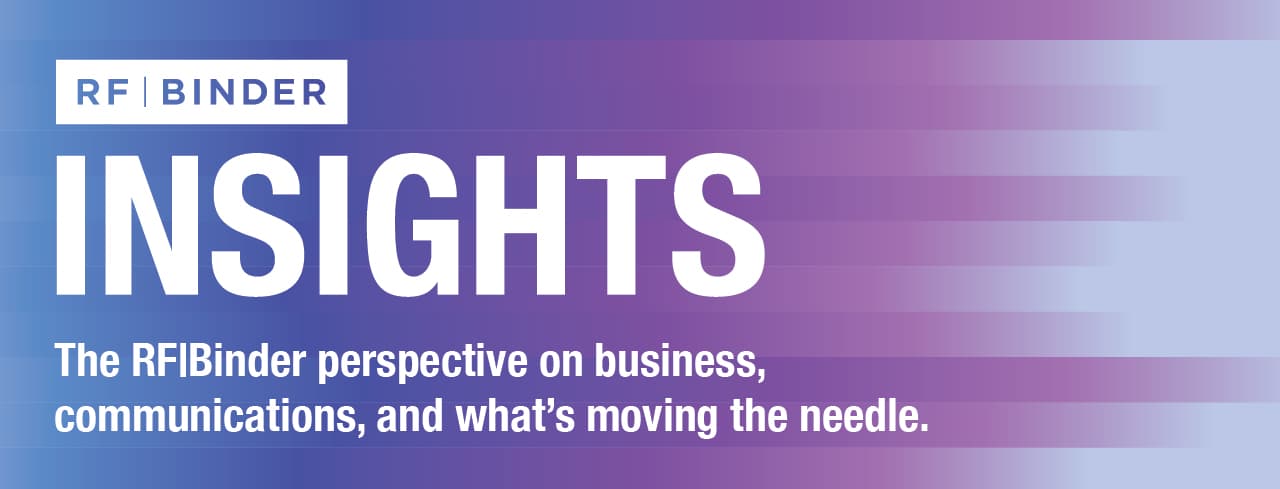For RF|Binder’s latest Hour to Empower, we had the opportunity to learn from Dean Julia Wilson of the Scripps Howard School of Journalism and Communications at Hampton University, who spoke to us about the history and critical role HBCU’s play in creating opportunities and increasing diversity in the communications field and beyond. RF|Binder hosts Hour to Empower sessions on a quarterly basis, bringing in a diverse mix of speakers and thought leaders to inspire reflection, strike up meaningful conversations with our colleagues, and drive impact for our clients. This event was part of RF|Binder’s Black History Month programming.
Kennedi Jackson, a Hampton University alum and RF|Binder team member, reflects on the conversation.
Historically Black Colleges and Universities, more commonly referred by their acronym “HBCUs”, originated in the 1800s. The very first HBCU, now known as Cheyney University, was founded in 1837 in Pennsylvania. HBCUs were started at a time when Black Americans were prevented from attending other colleges and universities due to racial discrimination. When Cheyney University was founded, students were provided education and training they were not allowed to receive anywhere else. Today, there are 101 HBCUs across the country.
HBCUs are essential because of the nurturing environment they create for Black students, allowing them to unapologetically be themselves and share experiences. At HBCUs, students are equipped with the foundational knowledge and tools to succeed post-grad. Not only that, they are afforded opportunities targeted specifically toward them – career fairs, internships, and more by people who understand the importance of diversity and making room for Black people in professional spaces. Students are able to learn from people who look like them and hold similar cultural values. While the students may hold diverse perspectives, they are able to take advantage of resources and support they may not have received anywhere else, particularly feeling welcome and a sense of belonging that helps with building confidence.
According to the U.S. Department of Labor and Statistics, only 12% of Public Relations specialists are Black or African American. The number decreases when looking at those in managerial or executive positions. If you look at numerous other industries, you’ll find similar statistics. It’s no secret that people of color are typically not afforded the same opportunities or pay as their white counterparts. However, it’s extremely disappointing when you look at how most of these industries benefit from the same people they’re internally excluding.
Tapping into Black Talent
Dean Julia Wilson of Hampton University’s Scripps School of Journalism and Communications recently discussed with our firm the significance of HBCUs providing a pipeline of talent to professional industries. She pointed out how people of color are the biggest consumers in America, yet in most companies, you are lucky to find even one person who looks like them. At primarily Black institutions, students of color get – for what is many their first, and maybe only – opportunity to be in classrooms full of people who look like them and encourage them to succeed.
At the university level, students benefit the most from the three “ships”: scholarships, internships, and mentorships. HBCUs are full of America’s next generation of leaders of untapped talent, but many students don’t receive the genuine “welcome” and guidance they need within organizations for promotions to reach beyond entry level positions. The three “ships” allow them pivotal opportunities to learn and develop necessary skills before entering the workforce and navigating their careers within the industry. To quote Dean Wilson, “All they need is a hand up, not a hand-out.”
How Corporations Can Help Pave the Way
Our conversation with the dean concluded with discussing next steps both professionals and universities can take to make sure HBCU students are always included and promoted. It’s vital that universities continue forming partnerships with large corporations and brands that their students are interested in and that can benefit from having diverse voices. These partnerships open doors for Black students that they previously may not have had and their talent and contributions add value to the company’s bottom line. It is important for brands to continue paving the way for future generations of industry leaders.
However, this is not the end of the conversation. Shining a light on the benefits and resources HBCUs have to offer is a constant discourse, and until diversity and inclusion are seen as true assets and not just quotas to meet, there will always be more work to be done.

